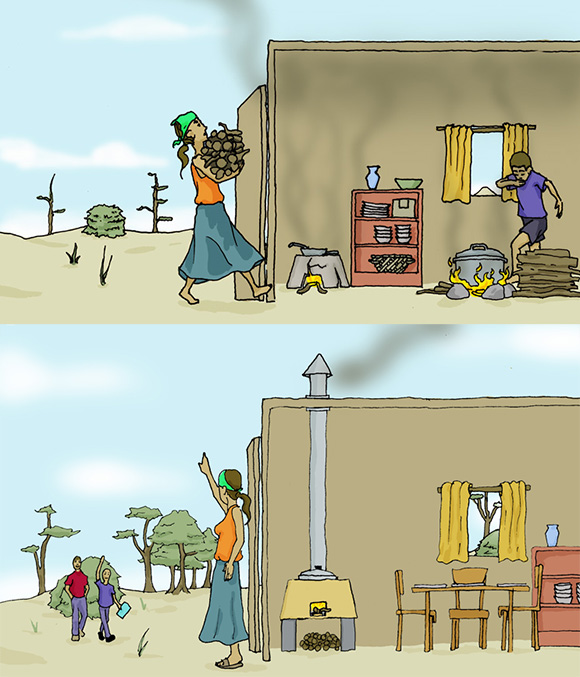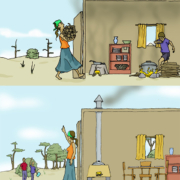Meeting the World Health Organization Emission Rate Targets

Adding a chimney is one recommended solution.
In 2014, the World Health Organization (WHO) published intermediate and final indoor air guidelines for vented and unvented biomass cooking stoves. Their strong recommendation directed governments and implementers to advocate technologies and fuels that are proven to protect health. The WHO advises implementers that to protect health the cook stove intervention should not exceed the following air pollutant emission rates in actual use:
WHO Intermediate Emission Rate Targets:
| Unvented stove | Vented stove |
| PM 2.5: 1.75 mg/min | PM 2.5: 7.15 mg/min |
| CO: 0.35 g/min | CO: 1.45 g/min |
Many newer biomass cookstoves with chimneys meet the WHO Targets of 7mg/minute for PM2.5 and 1.45 g/minute for CO when tested in the laboratory. Adding chimneys to cook stoves makes them more costly, but ARC designers are relieved to have a “line drawn in the sand.” As seen in Sam and Shikhar’s video last week, experiments in the ARC Test Kitchen showed that a natural draft hood can also be a big help in protecting health.
Protecting outdoor air quality is equally important. Dr. Nordica MacCarty (Oregon State University) will be investigating effects on indoor and outdoor air when the combination of a natural draft earthen hood and an earthen stove with Jet-Flame is used in houses in Malawi.
Industrial technologies routinely achieve strict standards for combustion efficiency and further reduce emissions with post combustion techniques. Introducing these well-known applications into cook stoves seems a logical progression. Clean up combustion and, at the same time, clean up the indoor and outdoor air. We have been very successful doing this in the US and Europe, and China is now on the same path.
The WHO vented stove Emission Rate Targets are based on 75% of the smoke and gases being removed up the chimney and out of the house. In their review of field studies, an average of 25% of the smoke and gas remained in the kitchen. Almost none of the residential biomass heating stoves in the United States meet the WHO Targets for PM 2.5 but the chimney transports the smoke outside where it is diluted by clean outdoor air to safe levels of concentration.
Meeting emission targets is a necessary and ever present goal. At the same time, wood burning stoves can be improved in many other ways. Improving the smoky mud stove to use less fuel is not a complete cure but is very helpful, benefitting the user who either pays for the fuel or has to collect it. The functional chimney makes a tremendous difference by sending smoke and gas out of the kitchen, making it a more pleasant and healthy environment. Making the high mass stove safer results in fewer burns. The list of improvements goes on and on – making the stove better at cooking local foods, increasing the number of air exchanges per hour in the kitchen, moving the kitchen outdoors, etc.
In the real world, positive changes are hard to accomplish but are always great.

 Lance MacCarty
Lance MacCarty

Leave a Reply
Want to join the discussion?Feel free to contribute!